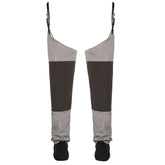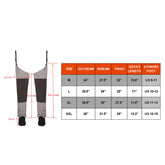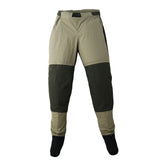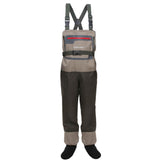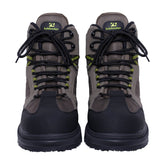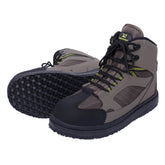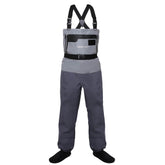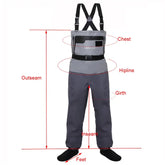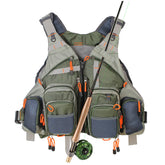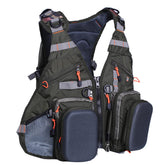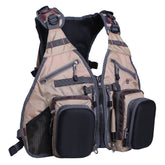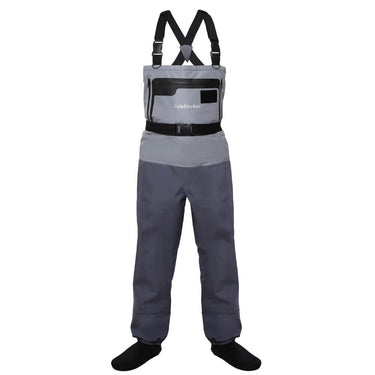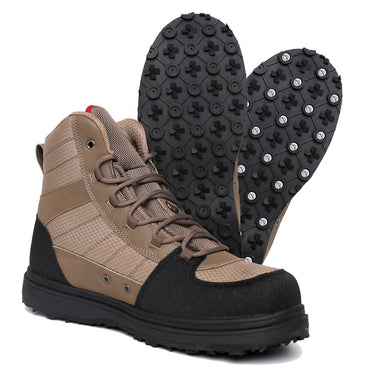Fly Fish for Bass with Poppers

When it comes to fishing for bass, using a fly rod opens up a whole new world of possibilities. There are many different ways to approach this fishing, but one of the most effective ways is by using popper flies. These are very effective at getting the attention of the fish and moving water.
When I first started fishing for bass using a fly rod, a popper was my first choice. I had just tossed it near a laydown when three quick strips produced a big fish.
3 FAVORITE POPPERS FOR BASS



Micro Popper- White- Size 10
One of my favorite flies is the micro popper, as bass prefer to eat smaller flies on the surface of the water. This fly is a compromise that's not too big, but it has a variety of colors and features rubber legs and deer hair tail.
Bass Popper- White and Blue- Size 6
Traditional bass poppers are hard to beat. The green and white color combination is a great representation of a frog, and it features rubber legs, red eyes, and deer hair on the back. This fly is ideal for large bass that are waiting in lily pads.
Hopper Popper- Yellow- Size 6
The Hopper Popper is one of my favorite flies due to its combination of the traditional popper pattern and the Chubby Chernobyl design. The combination of the two makes this fly an effective choice for sitting still and being stripped.
WHERE TO FIND BASS-STRUCTURE
Although the habits and tendencies of bass remain the same regardless of where you fish, the type of water can make a big difference in where you can find them.
Lakes
Areas that are heavily structured are ideal for bass as they will have plenty of room to move around and survey the surrounding water. They also give them an opportunity to feed in the open water.
Warmer Months
During the warmer months, bass will often move between deep and shallow water. They will often stay near weed lines and fallen trees in order to chase crustaceans and panfish. They are ambush hunters, and they like to be in areas where they are not easily visible.
The middle of the day is when bass start to retreat to deeper water. As the water temperature warms, they will start heading towards drop-offs and the deepest parts of the lake. They will wait out the sun in order to get a chance to eat. Also, since bass don't have eyelids, they tend to do poorly in shallow water.
Spawn
During the spring, bass will often be near their beds all the time. After the water begins to warm, the females will start producing eggs, and they will head to shallow water to build their beds. These areas will be filled with bass for a couple of weeks. Although they aren't very interested in feeding, they will often strike whenever something comes too close to their beds.
Colder Months
During the colder months, bass will most likely be around around 15 to 30 feet of water. Since the water will be extremely cold, they will head deep to conserve energy. Also, all of the other prey that they like to eat are in deeper water during the winter.
Rivers
In rivers, bass are more likely to sit close to their food. They still maintain their ambush technique, but they're also more willing to chase after baitfish and crustaceans in the main current.
 Casting to Bass with Poppers
Casting to Bass with Poppers
Up Along Banks
Throughout the year, bass will often be up along the banks. They'll stay near logs, rocks, and other structures that can provide them with shade and cover. Since water in rivers is constantly moving, it keeps the temperature relatively cool compared to the water in lakes. The ideal location for bass is near the main current.
In Pools with Current
Since river bass prefer to be in deep water, pools can be hit or miss. They like the deeper water during the cold and hot months, but if it's not moving, their food will not be able to get through the area. Therefore, you should locate areas that are within the main current. These slower moving bodies of water will allow bass to shelter and wait for their meals.
A lot of structures can be found at the bottom of pools, and bass will often stay there to watch for anything that comes out of the water.
GET THE GEAR RIGHT
For fly fishing, you need to make sure that you have the right equipment in order to catch bass. These fish are known to be aggressive, and they often live in areas where you'll have to cover a lot of water.
Fly Rod
A medium-weight to 8-weight rod is ideal for catching bass. This length will allow you to make long casts and repair any breaks that you might have. You should also use a fast-action or moderate-fast rod to ensure that you have the necessary power to fight and catch big fish.
Fly Reel
One of the most important factors that you should consider when it comes to choosing a fishing rod is its compatibility with your reel. For instance, if you're using a 7-pound rod, you should use a 5/8-weight model. This will allow you to balance the rod and ensure that its power matches that of your reel. Another important factor that you should consider is the size of the fish that you're targeting.
Fly Line
One of the most important factors that you should consider when it comes to choosing a fishing rod is its compatibility with your reel. For instance, if you're using a 7-weight rod, you should use a 7-weight line. This will allow you to cast well and ensure that your line doesn't get pulled underwater.
Leader
Dry flies are often used for bass fishing as they allow you to focus on the presentation of your lures instead of laying them down softly. A good choice for this type of fishing is a 7'-9'' 1x or 2x tapered leader, as these will allow you to cast well and give you more room to move around the water.
PLOP AND PAUSE – LET IT SIT
One of the most effective ways to land bass is by casting a popper and letting it sit for a couple of seconds. This method will allow you to target areas where bass are already living.
If the first attempt at casting doesn't work, try retrieving a popper with long strips and casting again. This method is usually effective during the mornings and evenings.
VARY YOUR RETRIEVE
When it comes to fishing for bass, one of the most important factors that you should consider is how you're retrieving your popper. Although it's usually a good idea to use a popper when the fish are feeding on the surface, it's also important to switch up your technique.
Try using smooth one-foot strips or long strips that are flowing smoothly. Then, try switching to shorter six-inch strips that are moving a lot of water and producing action.
There are no secret techniques that will always work for you when it comes to catching bass. However, you can try using a combination of short and powerful strips depending on the fish's behavior.
If the fish are still struggling to eat, try using shorter and smoother strips. This method will allow you to get some coaxing in order to get them to bite.
The Twitch
The lure known as the twitch is ideal for those who are shy when it comes to catching big bass. This method works well if you can see one on a bed. A twitch is a soft strip that's fished in a smooth manner. While the popper will still move, it won't make a wake.
The Pop
The pop retrieve is the best choice when it comes to getting the most out of your poppers. A short, strong strip is required in order to retrieve a popper. When you make these strips, the sound produced by the lure will be amplified.
The Dance – with different patterns
The goal of the dance retrieve is to imitate a frog that's swimming to the shore. This process can be a bit challenging since the frog moves side to side and slows down.
To imitate this technique, you should move the tip of your popper as you retrieve. Also, change the amount of force that you apply to the strip in order to make it longer.
ONE MORE CAST
One of the most popular types of flies used for fishing bass is the popper. They're very effective when it comes to fighting fish that are taking something on the surface.
Article refer:
1.Choosing the Best Fly Fishing Flies
2.Fly Fishing with Ant Patterns (Setup, Flies and More)
3.Complete Guide to Fly Fishing with the Elk Hair Caddis
4.Complete Guide to Fly Fishing with the Beaded Caddis Nymph
5.Fly Fish for Bass with Poppers
6.Complete Guide to Fly Fishing with the Zebra Midge (Simple to Tie)
7.Complete Guide to Fishing and Tying the Griffith's Gnat
8.15 Best Flies for Cutthroat Trout (These Flies Work!)
9.Aquatic Fly Fishing Insects
10.Fly Fishing Starter Flies
